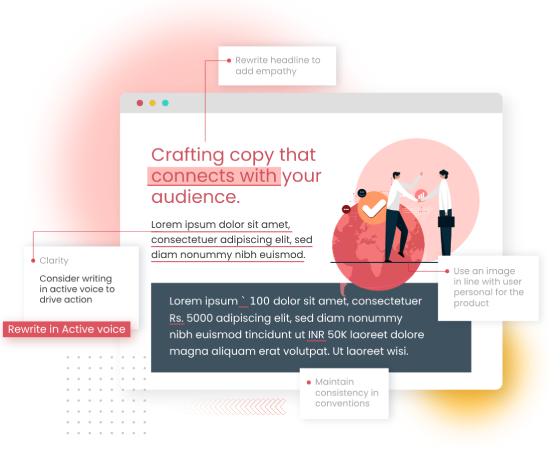

In a world where digital marketing drives business success, conversion rates stand as the ultimate measure of your content strategy’s effectiveness. Whether you’re a SaaS provider, an e-commerce business, or a B2B giant, turning casual visitors into paying customers is always the goal. Yet, one question looms large: Is your content helping or hurting your chances of conversion?
For business leaders, a content audit for conversions is the secret weapon to unlocking hidden potential. By evaluating, optimizing, and aligning content with buyer intent, you can transform your underperforming assets into high-converting resources. In this blog, we’ll dive deep into how content audits improve conversion rates, explore actionable strategies, and show why aligning content with buyer intent is crucial. Let’s get started.
At its core, a content audit is a systematic evaluation of your existing content library. Unlike a generic content audit that primarily focuses on performance metrics like traffic or page views, a content audit for conversions delves deeper into how your content drives meaningful user actions. This involves understanding whether your content is persuading users to fill out lead forms, download resources, or complete purchases. Essentially, it shifts the focus from just drawing an audience to converting them into loyal customers or leads.
When tied to a CRO strategy (Conversion Rate Optimization), a content audit becomes more than just a simple review—it evolves into a data-backed roadmap that uncovers opportunities for improved engagement and higher ROI. The goal is to align your content with buyer intent, ensuring every piece resonates with your target audience's needs at each stage of their journey. Through this alignment, business leaders can identify the best ways to align content with buyer intent, turning generic messaging into conversion-driven assets.
To effectively conduct a content audit for conversions, specific metrics must take centre stage. These include:
Aligning your content with buyer intent is arguably the best way to align content with buyer intent—a win-win for businesses and their audience. A content audit uncovers whether your messaging addresses specific pain points, answers key questions, and provides value at every stage of the buyer’s journey.
The power of a CRO strategy lies in continuous refinement. A content audit for conversions is the starting point of this iterative process. By evaluating and optimizing factors like headlines, visuals, tone of voice, and keyword usage, your content transforms into a highly effective tool for conversions. As each piece becomes more targeted and engaging, you’ll notice improvements in user action metrics, leading to stronger outcomes for your business.
Conducting a content audit is more than just an exercise in organising your existing assets; it’s an opportunity to unlock the full potential of your content. A content audit for conversions provides actionable insights that directly impact your bottom line by aligning with buyer intent, enhancing user experience, and boosting ROI. Let’s explore the key benefits in detail.
Buyer intent is often described as the holy grail of conversions. Knowing what your audience is searching for and where they are in the buyer’s journey allows you to create content that resonates. A content audit helps uncover the best ways to align content with buyer intent, whether your audience is in the awareness, consideration, or decision stage.
By mapping content to these stages during a content audit for conversions, you ensure that your messaging is both targeted and effective. This alignment strengthens trust and improves the likelihood of converting prospects into loyal customers.
Even the most robust content library may have blind spots. A content audit surfaces these gaps, revealing where you’re missing critical pieces that could otherwise lead to conversions. For instance:
A content audit for conversions ensures your library is balanced and comprehensive, helping you bridge these gaps. By identifying these opportunities, your CRO strategy becomes more holistic, addressing the diverse needs of your audience.
Reinventing the wheel isn’t always necessary. Oftentimes, your existing content holds immense potential but simply hasn’t been optimised to its fullest. A content audit for conversions identifies these underperforming assets, allowing you to breathe new life into them.
For example:
This process highlights how content optimization increases conversions by tweaking what you already have, rather than creating something entirely new. It’s a cost-effective way to maximize the impact of your current resources.
A strong CRO strategy goes hand-in-hand with a seamless user experience. A content audit evaluates how well your content performs from a user’s perspective. Factors like mobile responsiveness, loading times, and even the structure of your pages can influence whether a visitor stays or leaves.
For instance:
Small improvements—like using bullet points for scannability, compressing images for faster load times, or updating broken links—can lead to noticeable gains. By improving user experience through a content audit for conversions, you reduce friction and guide users effortlessly toward conversion.
An effective content audit for conversions doesn’t just evaluate your content—it transforms it into a powerful tool for driving action. By following these steps, you can identify weaknesses, uncover opportunities, and create a roadmap for a winning CRO strategy. Let’s break down each step in detail.
The foundation of any successful content audit begins with clearly defined objectives. Without specific goals, your audit risks becoming a directionless exercise. Ask yourself: What are you trying to achieve?
Common goals for a content audit for conversions might include:
Once you set your Key Performance Indicators (KPIs)—such as conversion rates, bounce rates, or time-on-page—you can focus your audit on achieving these outcomes. This clarity ensures that every piece of content is evaluated through the lens of how content optimization increases conversions.
For instance, if your goal is lead generation, you’ll zero in on how well your CTAs are performing and whether the content aligns with buyer intent at every stage of their journey.
Before making any improvements, you need a clear picture of your existing content library. Create an exhaustive inventory of all your assets—blogs, landing pages, videos, email campaigns, and downloadable resources.
Tools like Screaming Frog, Semrush, or HubSpot can make the process more efficient by crawling your website and cataloguing content for you.
Once catalogued, categorise the content based on its purpose, audience, and funnel stage. For example:
This process lays the groundwork for uncovering the best ways to align content with buyer intent and ensures you’re not overlooking hidden gems that can be optimised.
Data is at the heart of a meaningful content audit for conversions. Dive into your analytics platforms (like Google Analytics or HubSpot) to assess the performance of each content piece. Focus on key metrics that reveal opportunities for improvement:
By analysing these metrics, you’ll identify areas where content optimization increases conversions. For example, a blog post with high traffic but low engagement could benefit from a stronger CTA or additional internal links guiding users to action-oriented pages.
A successful CRO strategy addresses not only what’s underperforming but also what’s missing. Mapping your content against the buyer’s journey is a crucial step in this process.
Here’s how:
For example, if you’re missing case studies, you might be failing to convince decision-stage buyers. Similarly, if you haven’t targeted long-tail keywords, you could be losing out on high-intent traffic that’s ready to convert. A content audit for conversions identifies these gaps and ensures your library is balanced and aligned with user needs.
Once you’ve identified underperforming assets and gaps, it’s time to take action. Optimising your content for conversions often requires minor yet impactful changes.
Key optimisation strategies include:
For example, a poorly performing landing page might only need a CTA redesign or a visual upgrade to reduce bounce rates and increase conversions. These tweaks demonstrate how content optimization increases conversions and turn ordinary pages into high-performing assets.
Buyer intent is the foundation of a successful CRO strategy. To maximise conversions, your content must address the needs, pain points, and aspirations of your audience at every stage of their journey. By aligning your content with buyer intent, you can create an impactful experience that drives action. Here's how to make it happen:
Every customer goes through three primary stages of the buyer’s journey: awareness, consideration, and decision. To align your content with buyer intent, your content must be tailored to meet the specific requirements of each stage:
Consideration Stage: Here, buyers are evaluating their options. Use comparison guides, case studies, and whitepapers to showcase how your product or service stands out.
Decision Stage: Buyers are ready to take action, but they need a final nudge. This is where detailed product pages, testimonials, and persuasive CTAs come into play.
For example, a content audit for conversions might reveal a lack of decision-stage content, such as case studies or testimonials. Filling this gap ensures your content supports the buyer’s intent at every step and demonstrates how content optimization increases conversions.
Personalization is key to connecting with your audience. Generic, one-size-fits-all content often misses the mark, whereas personalized messages resonate deeply and drive conversions.
Use data to understand your audience’s demographics, preferences, and pain points. Tools like HubSpot, Salesforce, or Marketo can help you segment your audience and deliver targeted content. For example:
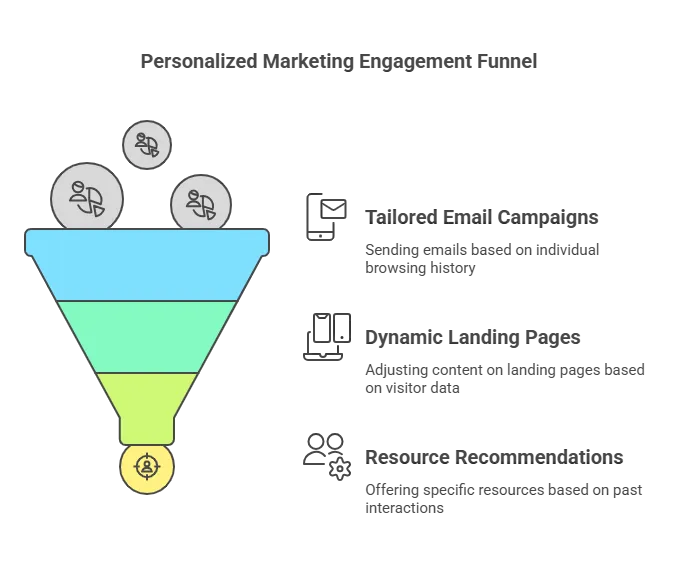
Send tailored email campaigns based on browsing history.
Create dynamic landing pages that adjust headlines or CTAs based on a visitor’s location or referral source.
Recommend specific resources, like whitepapers or webinars, based on past interactions.
Imagine running a content audit and discovering that certain blog posts aren’t converting well. Personalizing the CTAs, such as offering a free trial for tech-savvy users or a downloadable guide for beginners, can better align with buyer intent and enhance results. This approach is among the best ways to align content with buyer intent while also boosting your CRO strategy.
People connect with stories, not statistics. Storytelling is a powerful tool to align your content with buyer intent because it helps your audience see themselves in the narrative you create.
Craft stories where your product or service is the hero, solving real-world problems for real people. Highlighting challenges, emotions, and resolutions helps humanize your brand and makes your message more memorable.
For instance, a B2B cybersecurity firm could use storytelling to improve engagement by sharing real-world breach scenarios. They could demonstrate how their solution effectively averted similar risks, showing potential customers how their services can protect businesses like theirs. This storytelling approach transforms dry data into compelling narratives that reinforce how content optimization increases conversions.
When HDFC Bank, India’s leading private sector bank, approached LexiConn, they had a clear vision—to refine their customer communication strategy. With millions of customers relying on their services daily, they knew that every email, SMS, and letter needed to carry the same consistent message of trust and professionalism. But with so much at stake, they needed a partner who could go beyond surface-level edits. That’s where LexiConn stepped in.
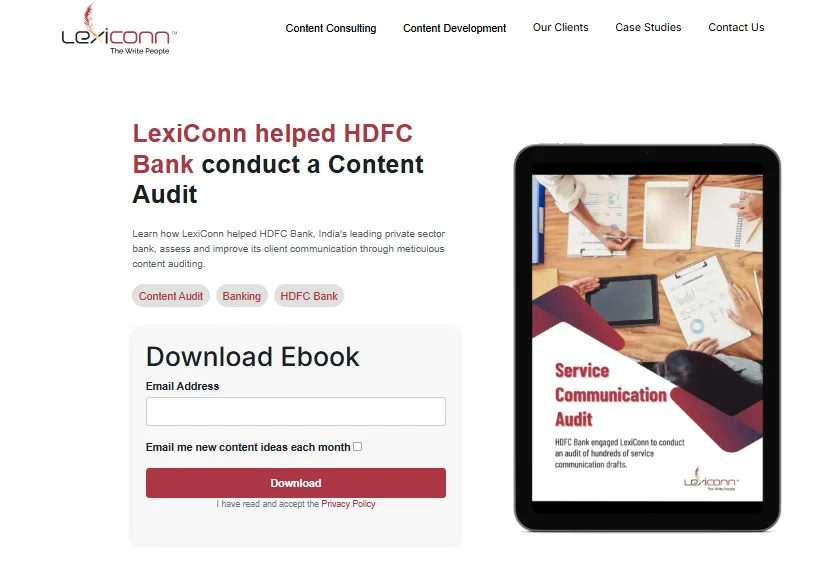
Imagine this: millions of messages flowing from different teams—transactional updates, promotional emails, alerts, and customer service responses. Each piece served its own purpose, but together, they created a patchwork of communication that sometimes felt inconsistent.
For a bank like HDFC, known for its trustworthiness and excellence, even the smallest misstep could dilute its brand image. They needed a way to bring harmony to their diverse communication channels while maintaining clarity and alignment with customer expectations.
At LexiConn, we didn’t just look at HDFC’s content library; we dived into it like detectives, searching for opportunities to optimize and elevate. Our process wasn’t just about editing—it was about transformation.
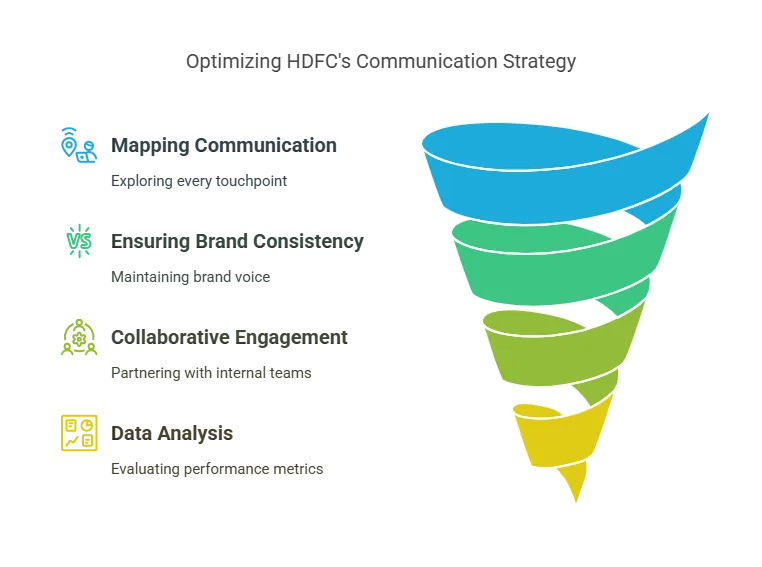
Every piece of communication, from SMS updates to detailed financial letters, was analysed. We didn’t leave a single customer touchpoint unexplored.
HDFC’s brand voice had to remain consistent—a tone of authority, professionalism, and trust. We ensured that every word reflected these values, no matter the format.
Rather than working in isolation, we partnered with HDFC’s internal teams. This collaboration allowed us to understand the nuances of their customer segments and craft solutions that resonated.
Our audit wasn’t just qualitative. We analysed performance metrics, customer feedback, and engagement rates to pinpoint underperforming areas and highlight what was already working well.
By the end of the content audit, HDFC Bank had more than just a cleaner content library. They had a roadmap to better customer communication. The results spoke volumes:
For HDFC Bank, this wasn’t just an exercise in editing—it was a transformation of how they connected with their audience. And for LexiConn, it was yet another opportunity to help a prestigious brand elevate its communication game.

When it comes to conducting content audits, LexiConn stands out as a trusted partner. Here’s why:
A content audit for conversions is not just a tool; it’s a strategic necessity for any business looking to stay competitive. By aligning content with buyer intent and optimizing underperforming assets, you can unlock higher engagement and better ROI. Emerging trends and real-world success stories prove the value of a thoughtful audit.
At LexiConn, we understand that your content is your brand’s voice. Schedule a free 30-minute consultation today and take the first step toward building trust and engagement through better communication. Let’s write your success story together.
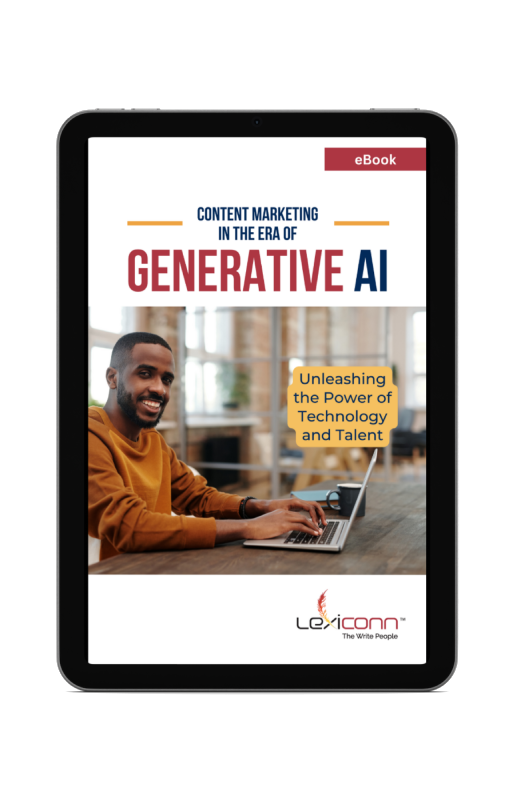

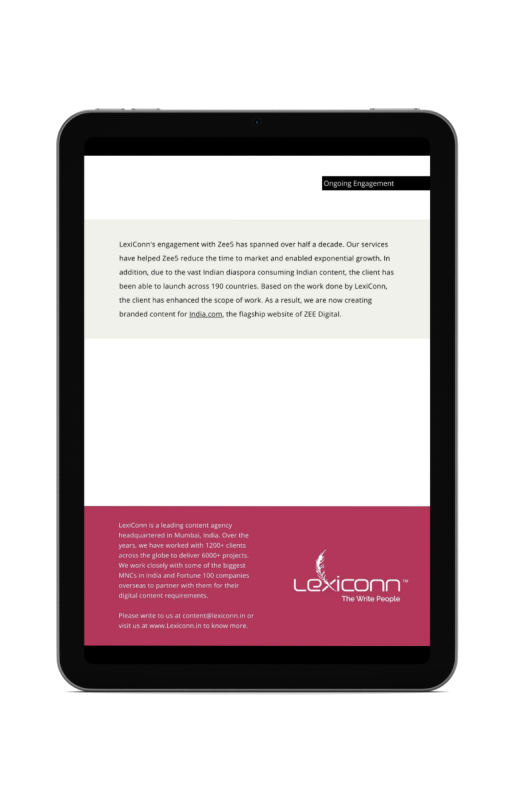
I have read and accept the Privacy Policy
Read More